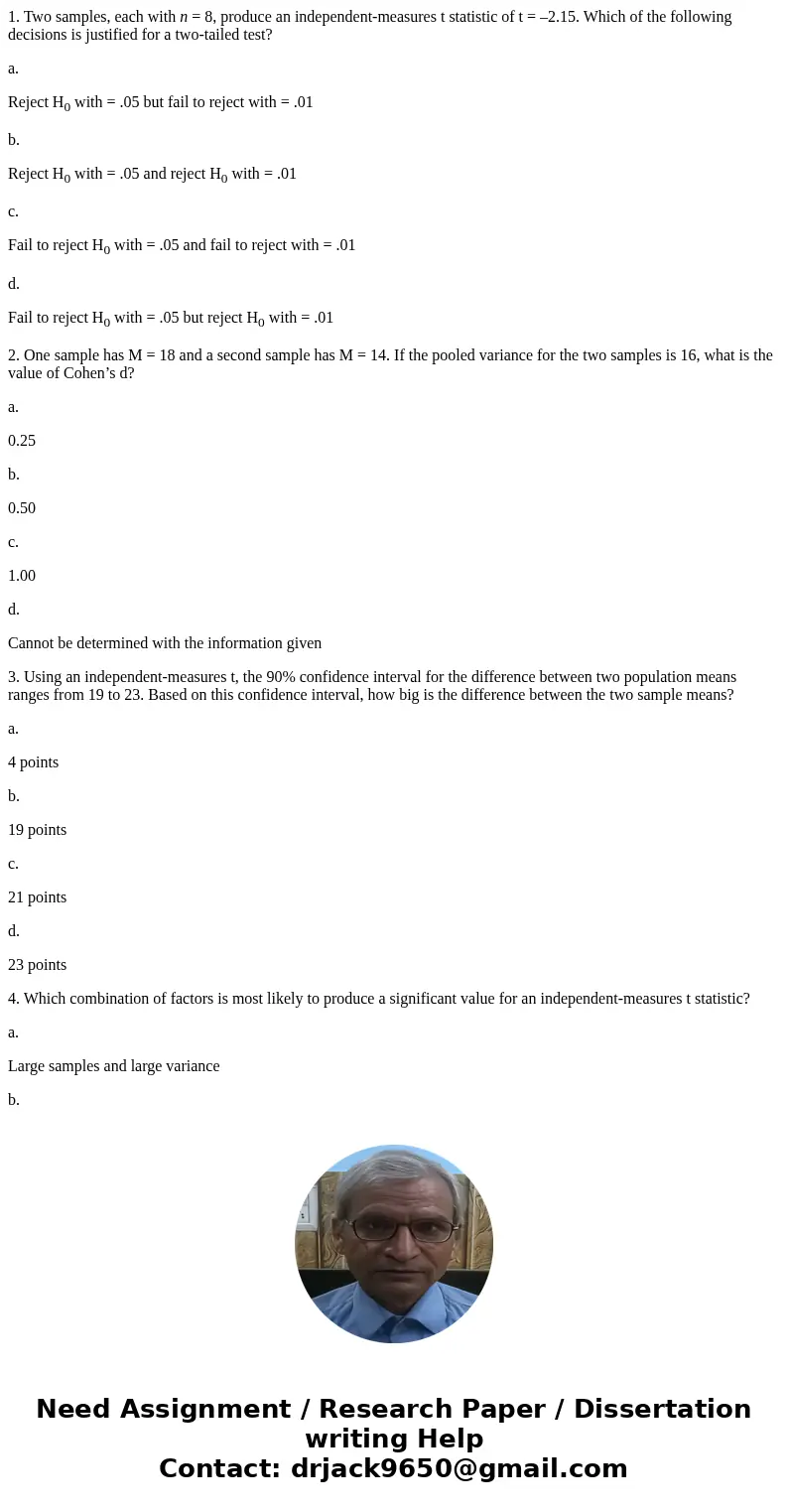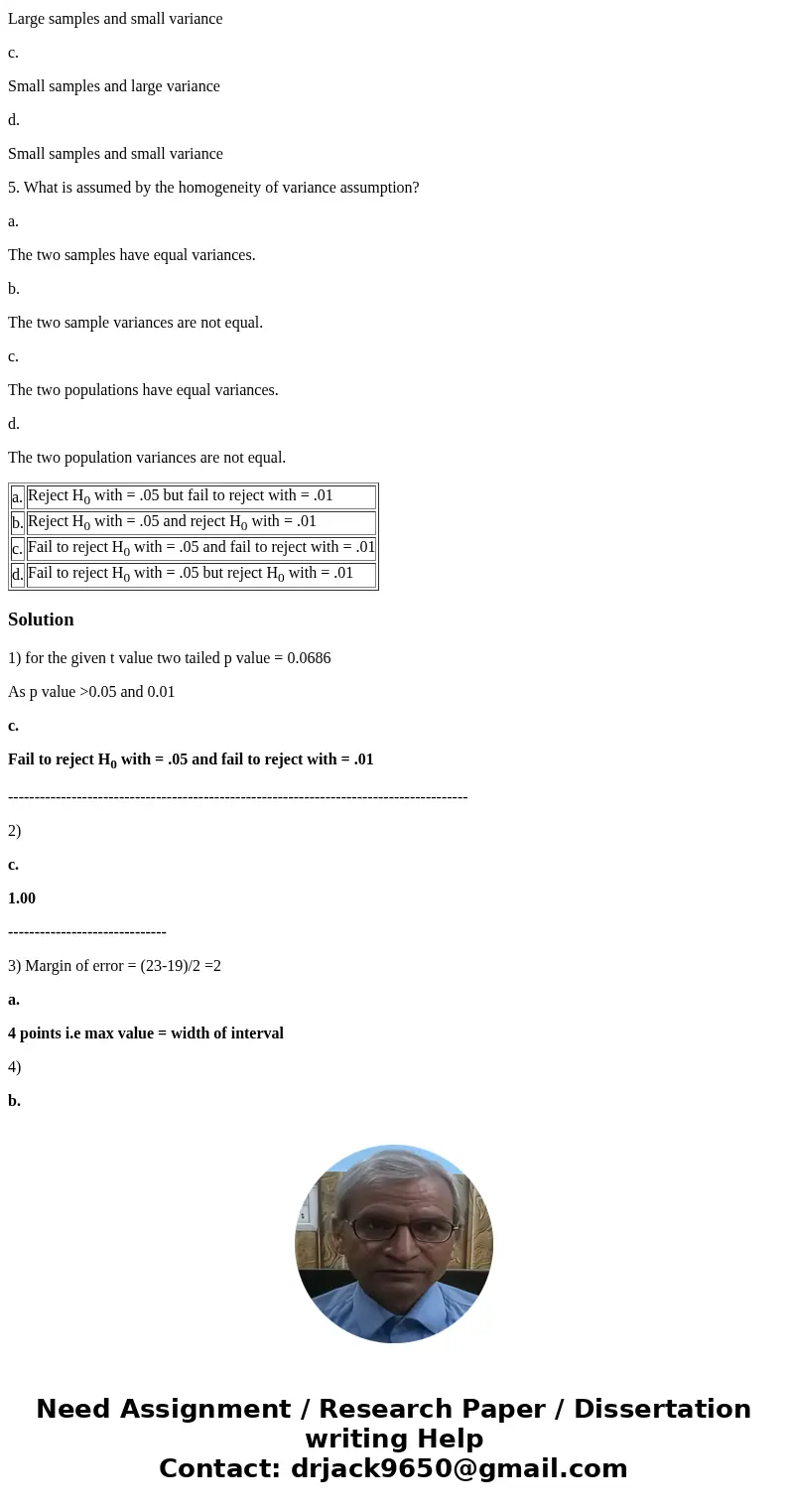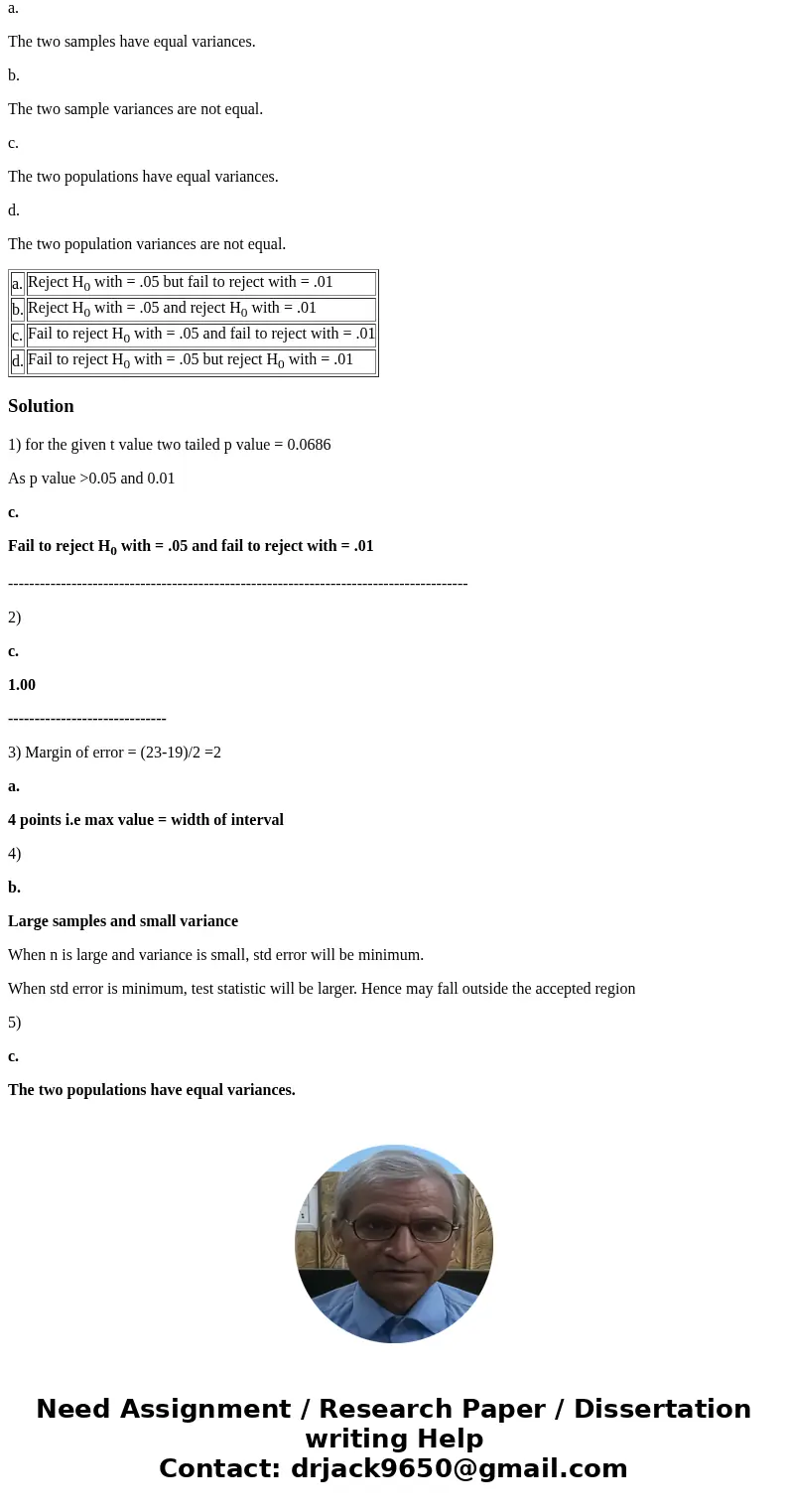1 Two samples each with n 8 produce an independentmeasures
1. Two samples, each with n = 8, produce an independent-measures t statistic of t = –2.15. Which of the following decisions is justified for a two-tailed test?
a.
Reject H0 with = .05 but fail to reject with = .01
b.
Reject H0 with = .05 and reject H0 with = .01
c.
Fail to reject H0 with = .05 and fail to reject with = .01
d.
Fail to reject H0 with = .05 but reject H0 with = .01
2. One sample has M = 18 and a second sample has M = 14. If the pooled variance for the two samples is 16, what is the value of Cohen’s d?
a.
0.25
b.
0.50
c.
1.00
d.
Cannot be determined with the information given
3. Using an independent-measures t, the 90% confidence interval for the difference between two population means ranges from 19 to 23. Based on this confidence interval, how big is the difference between the two sample means?
a.
4 points
b.
19 points
c.
21 points
d.
23 points
4. Which combination of factors is most likely to produce a significant value for an independent-measures t statistic?
a.
Large samples and large variance
b.
Large samples and small variance
c.
Small samples and large variance
d.
Small samples and small variance
5. What is assumed by the homogeneity of variance assumption?
a.
The two samples have equal variances.
b.
The two sample variances are not equal.
c.
The two populations have equal variances.
d.
The two population variances are not equal.
| a. | Reject H0 with = .05 but fail to reject with = .01 |
| b. | Reject H0 with = .05 and reject H0 with = .01 |
| c. | Fail to reject H0 with = .05 and fail to reject with = .01 |
| d. | Fail to reject H0 with = .05 but reject H0 with = .01 |
Solution
1) for the given t value two tailed p value = 0.0686
As p value >0.05 and 0.01
c.
Fail to reject H0 with = .05 and fail to reject with = .01
---------------------------------------------------------------------------------------
2)
c.
1.00
------------------------------
3) Margin of error = (23-19)/2 =2
a.
4 points i.e max value = width of interval
4)
b.
Large samples and small variance
When n is large and variance is small, std error will be minimum.
When std error is minimum, test statistic will be larger. Hence may fall outside the accepted region
5)
c.
The two populations have equal variances.



 Homework Sourse
Homework Sourse